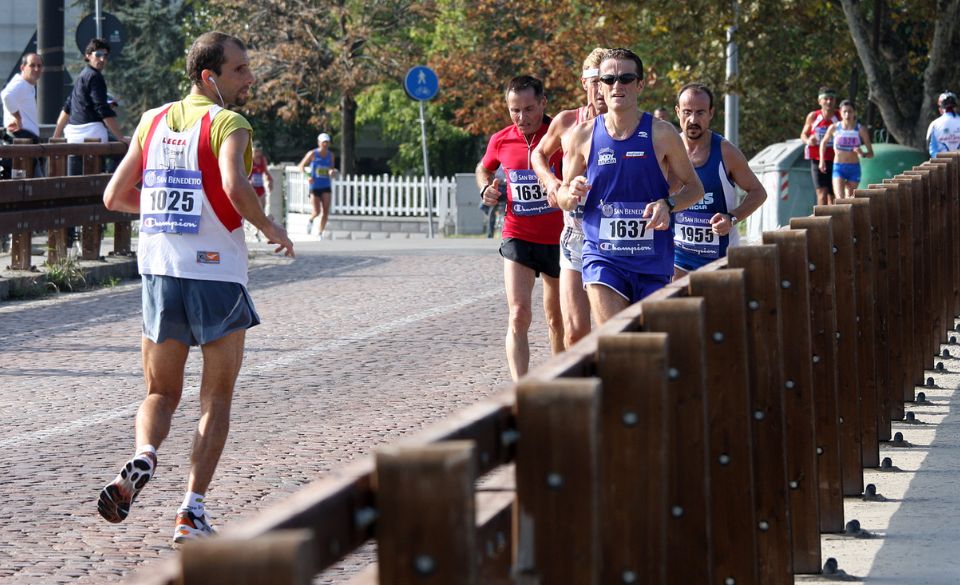
How To Become Faster At Running in 2023 – Beginner Version
Page Contents
Running is one of the most popular forms of exercise and is enjoyed by millions of people around the world. It is a great way to stay in shape and can be done anywhere, anytime. Even if you are not a professional runner, there are still ways to improve and become faster. Here are 10 tips to help you become faster at running.
1. Increase your mileage. Adding miles to your running can help you become faster. Start off by increasing your weekly mileage by no more than 10% so that your body can adjust.
2. Train with hills. Hills can help you become faster by building muscle strength and increasing your running economy. Adding hill workouts to your routine a few times a week can help you become faster.
3. Improve your form. Making sure your form is correct can help you become faster by improving your efficiency. Focus on keeping your back straight, your arms in a relaxed position, and taking short, quick strides.
4. Strengthen your muscles. Stronger muscles will help you to become faster by providing more power with every stride. Incorporate exercises such as squats, lunges, and calf raises into your training routine.
5. Stretch and foam roll. Stretching and foam rolling can help prevent muscle tightness and reduce the risk of injury. Spend at least 10 minutes stretching and foam rolling after each run.
6. Do speedwork. Speedwork can help you become faster by improving your speed and endurance. Incorporate interval training, hill sprints, and tempo runs into your training routine.
7. Don’t forget to rest. Resting is just as important as training and can help you become faster by allowing your body to recover. Take at least one day of rest every week.
8. Eat a nutritious diet. Eating a healthy, balanced diet can help you become faster by providing your body with the necessary nutrients and energy it needs. Be sure to eat plenty of fruits and vegetables, whole grains, lean proteins, and healthy fats.
9. Wear the right gear. Invest in the right gear such as the right shoes, shorts, and shirt. The right gear can help increase your speed by providing more comfort and support.
10. Have fun. Don’t forget to have fun while running. Doing something you enjoy can help motivate you to become faster since you’ll be more likely to stay dedicated and consistent with your training.
By following these 10 tips, you should be able to become faster at running. Remember to stay dedicated, have patience, and have fun with your running.
Best Workouts To Increase Running Speed
For many runners, increasing their running speed is a goal they strive to reach. Whether it’s training for a race or simply trying to push their limits, increasing running speed can be a difficult task. However, with the right workouts and proper training, runners can make the most out of their running time and reach the speed they desire.
The key to increasing running speed is to focus on building strength, endurance, and speed. Strength training will help runners build their endurance and speed, allowing them to run for longer distances and at a faster pace. Endurance training is another essential element for increasing running speed as it will enable runners to push themselves for longer periods of time. Finally, speed workouts will work to increase the runner’s maximum speed by teaching them how to utilize the power of their running stride.
Below are a few of the best workouts that runners can use to increase their running speed.
Interval Training
Interval training is a type of workout that alternates moderate bursts of higher intensity exercise with lower intensity exercise or rest periods. This type of exercise has many benefits, such as improving cardiovascular fitness, increasing speed and endurance, and burning more calories than a traditional steady-state workout. A running interval workout is a great way to get a full-body workout with minimal equipment and in a short amount of time.
To start a running interval workout, begin with a warm-up that consists of light jogging or dynamic stretching. This will help your body to warm up and prepare for the intensity of the workout. Once you’ve completed your warm-up, you can begin the actual workout.
Start by running for a certain amount of time, such as 30 seconds. Then, take a short break and walk or jog at a slower pace for a few minutes to recover. After the break, begin running again for the same amount of time as the first bout. Continue this pattern for a set period of time, such as 5-15 minutes.
If you’re looking to increase the intensity of your running interval workout, you can add hills, stairs, or other inclines to your runs. This will make the workout more challenging, as you’ll need to use more energy to complete the course. You can also increase the duration of the intervals, such as running for one minute and then taking a break for 30 seconds.
At the end of your running interval workout, it’s important to give your body time to cool down and recover. This includes doing some light stretching and walking or jogging at a slow pace. This will help your body to adjust back to a resting state and reduce your risk of soreness or injury.
Interval training is a great way to get a full-body workout in a short amount of time. A running interval workout is an effective way to improve speed and endurance, as well as burn more calories. With a few adjustments, such as adding hills or increasing the duration of the intervals, you can make the workout even more challenging. Finally, don’t forget to give your body time to cool down and recover, as this will help you to get the most out of your running interval workout.
Hill Training
Hill running is a great way to increase both speed and endurance. It can also be a great way to break up a long run and add some variety to your routine. Hill running can be challenging but it can also be very rewarding.
The first step in any hill running workout is to find a hill that is steep enough that you can feel the intensity of the workout. For example, if you are a beginner you may want to find a hill that is around 5-7% grade. After you have found the hill you are going to use, you should warm up with a mile of easy running before beginning the hill workout. This will help prepare your muscles for the workout.
Once you have finished your warm up, it is time to begin the actual hill running workout. You should start out by running for 2-3 minutes at a moderate pace. This will help you get used to the incline of the hill. After the 2-3 minutes, you can increase the intensity to a hard effort for 1-2 minutes. This is the point where your heart rate will start to climb and you will start to feel the burn in your legs.
Once you have completed the hard effort, you can decrease the intensity back to a moderate pace for 1-2 minutes. This will allow your heart rate to recover and also help you prepare for another round of hard effort. You should continue this process of increasing and decreasing the intensity of your runs until you have reached your target time or distance.
For example, a great hill running workout for a beginner is to complete 3-4 rounds of 2-3 minutes hard effort followed by 1-2 minutes moderate effort. This should take a total of 15-20 minutes to complete. As you become more comfortable with hill running and increase your fitness level, you can increase the intensity of the workout by running for longer periods at a hard effort and decreasing the length of the recovery periods.
Hill running can be a very rewarding and beneficial way to improve your running speed and endurance. It is important that you always make sure to warm up properly and to not exceed your limits. When done correctly, hill running can help you become a better, faster and more efficient runner.
Plyometric Training
Plyometric training is a great way to increase running speed. This type of training involves jumping and hopping exercises that help to increase the runner’s explosiveness and power. Plyometric training will help to improve the runner’s sprinting ability and allow them to burst into a fast speed quickly.
Strength Training
Strength training is an important component of increasing running speed. Strength training will help to increase the runner’s overall power and explosiveness, allowing them to run faster and more efficiently. Strength training should incorporate exercises that target the legs, core, and upper body.
Sprint Training: Sprint training is one of the best ways to increase running speed. Sprinting involves running as fast as possible for short distances. This type of training will help to increase the runner’s maximum speed and power.
These are just a few of the best workouts to increase running speed. With the right training and proper technique, any runner can use these exercises to reach the speed they desire.


